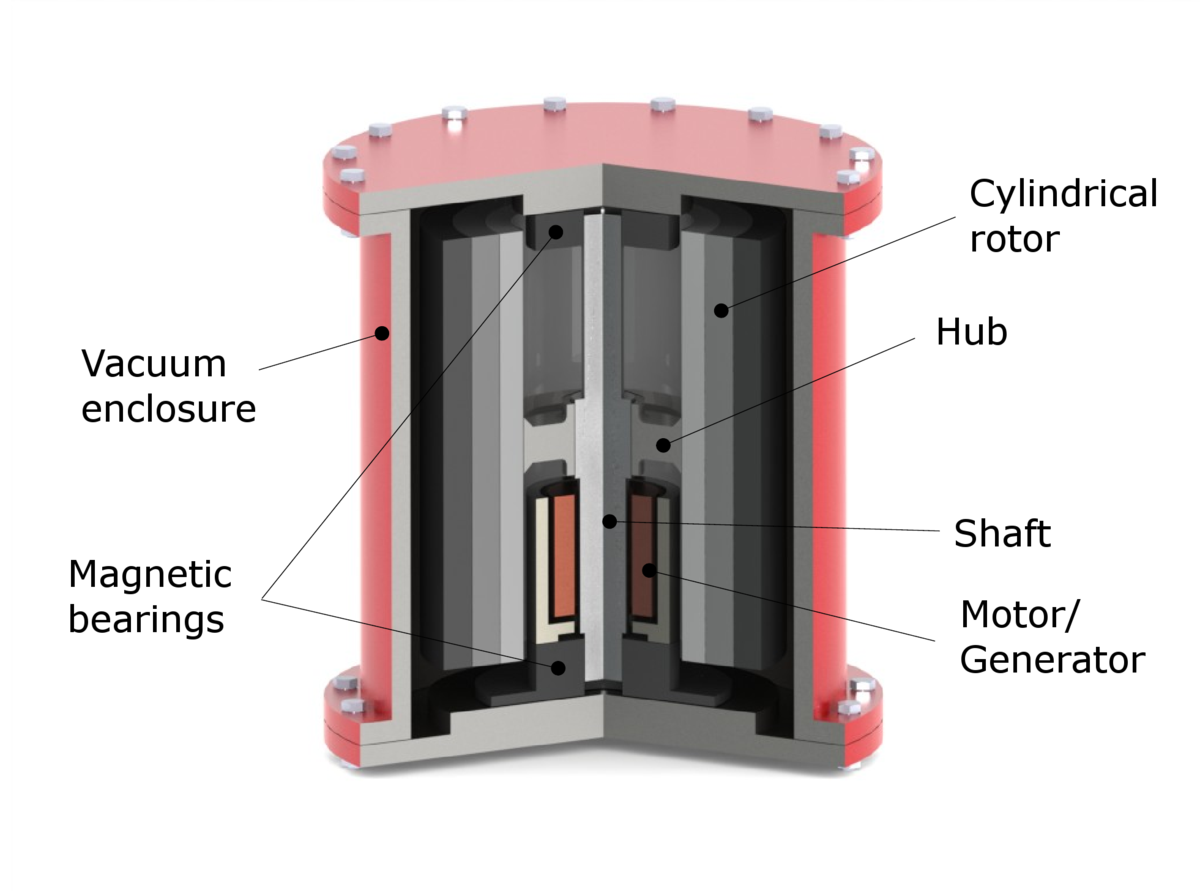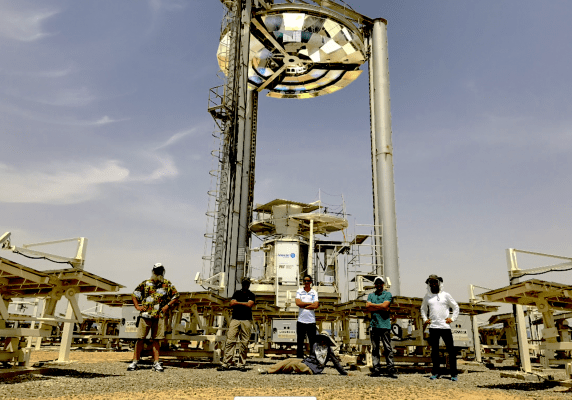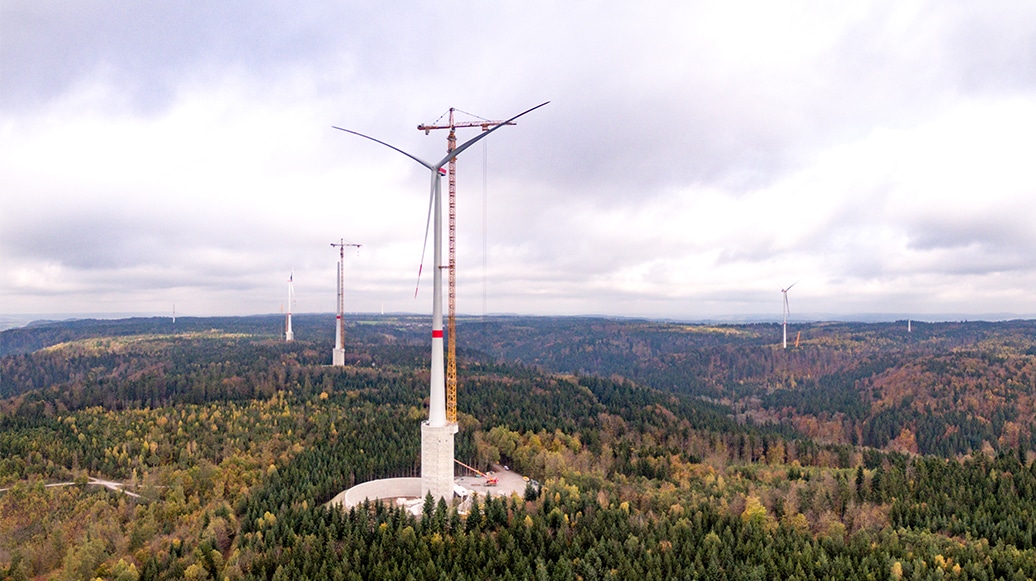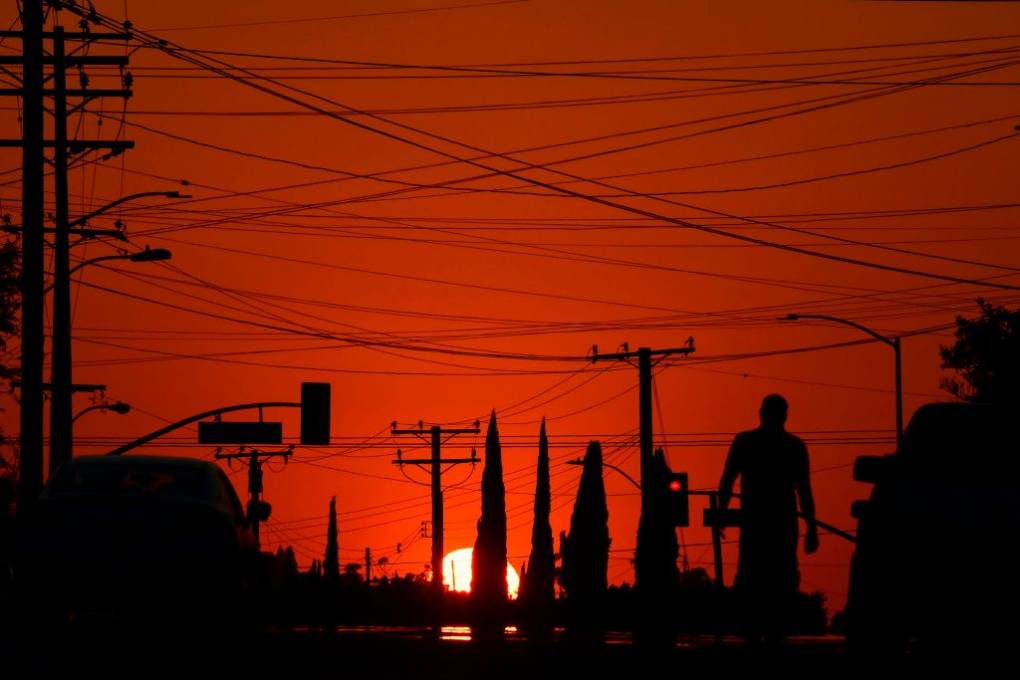
Flywheel storage power system
A flywheel-storage power system uses a flywheel for energy storage, (see Flywheel energy storage) and can be a comparatively small storage facility with a peak power of up to 20 MW. It typically is used to stabilize to some degree power grids, to help them stay on the grid frequency, and to serve as a short-term compensation storage. Unlike common storage power plants, such as the pumped storage power plants with capacities up to 1000 MWh, the benefits from flywheel storage power plants can be obtained with a facility in the range of a few kWh to several tens of MWh.[1] They are comparable in this application with battery storage power plants.
Possible areas of application are places where electrical energy can be obtained and stored, and must be supplied again to compensate for example, fluctuations in the seconds range in wind or solar power. These storage facilities consist of individual flywheels in a modular design. Energy up to 150 kWh can be absorbed or released per flywheel. Through combinations of several such flywheel accumulators, which are individually housed in buried underground vacuum tanks, a total power of up to several tens of MWh can be achieved. The electrical connections power low voltage motors via a DC intermediate circuit and the power converter systems are comparable to those found in plants used in the high-voltage direct current transmissions application.[2]
Sometimes battery storage power stations are built with flywheel storage power systems in order to conserve battery power. Flywheels can handle rapid fluctuations better.[3][4]





















